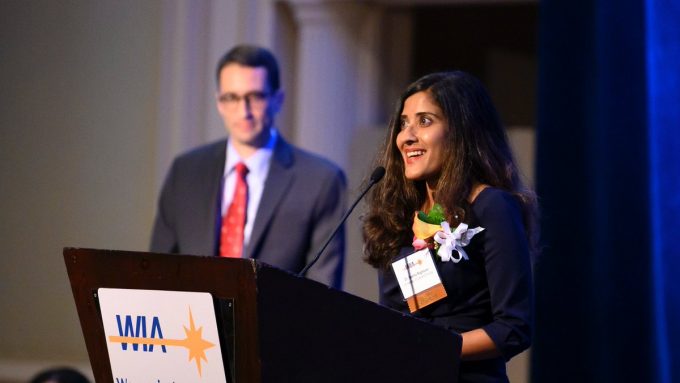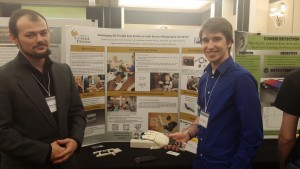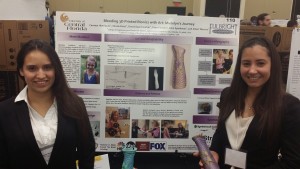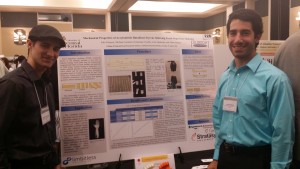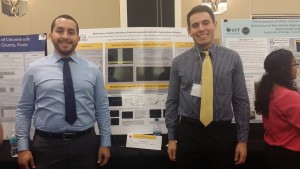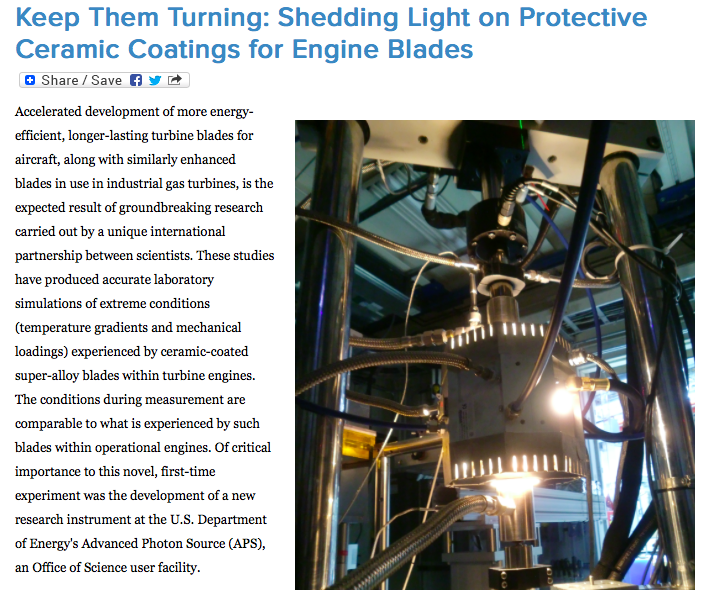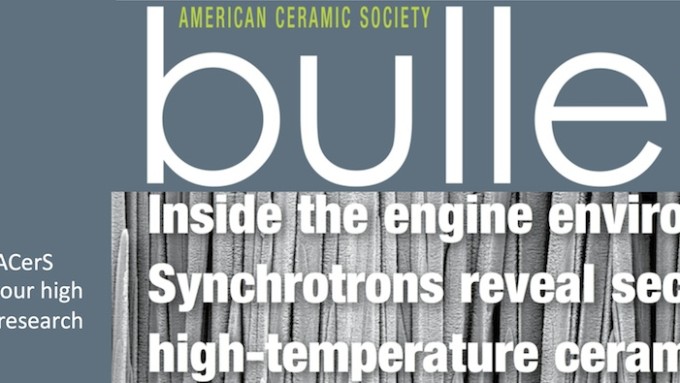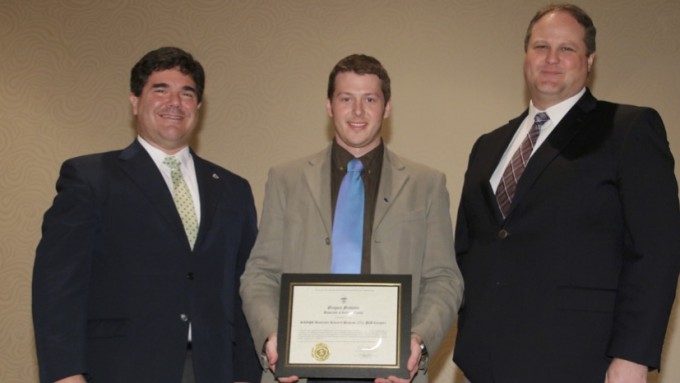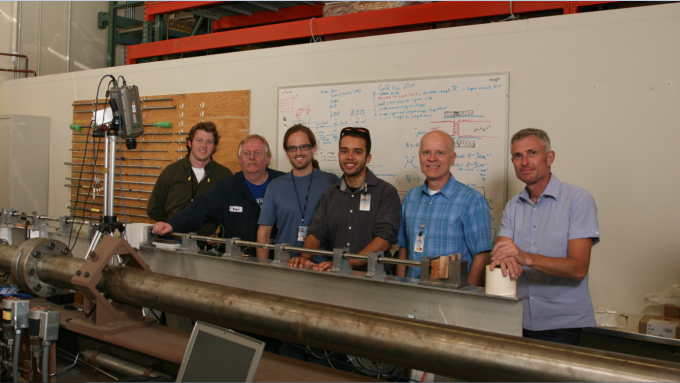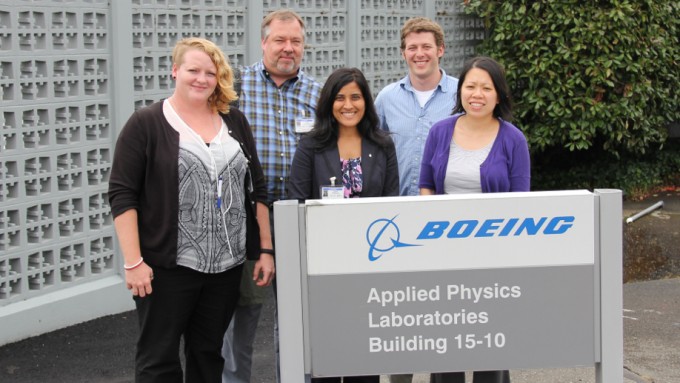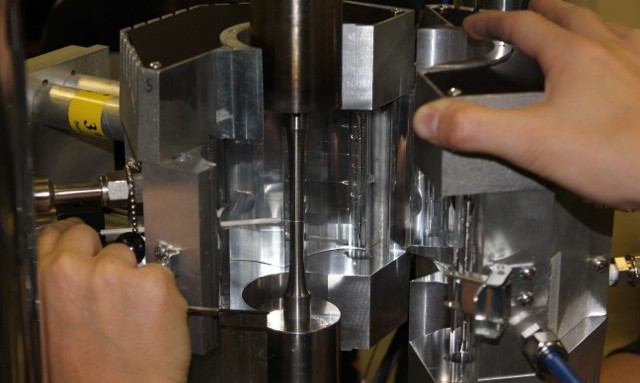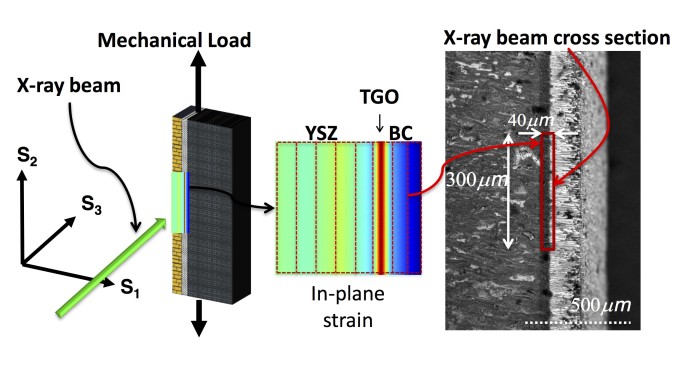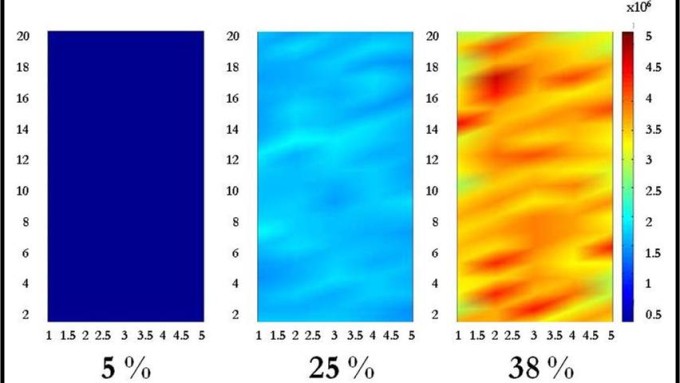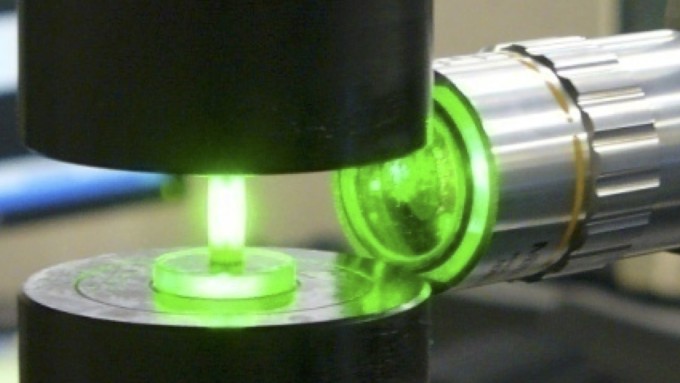Ashley and Greg performed summer research at Boeing Seattle
Images
Dr. Raghavan is awarded Educator of the Year by Women in Aerospace
Dr. Raghavan is named
Educator of the Year
by Women in Aerospace
Estefania Bohorquez Honored by AIAA
International Research Collaboration Award @ Univ of Sydney
Our poster presentations at SURE 2015
The Showcase of Undergraduate Research Excellence (SURE) is a poster- or display-based forum for UCF undergraduates to present their research and creative projects to the broader university community. This year 4 posters from our research were presented at the Showcase. Alex (right) presented work on high strain rate studies while Imad (left) presented his Honors in the major work on Hybrid composites. Imad won an Honorable Mention award for his poster.
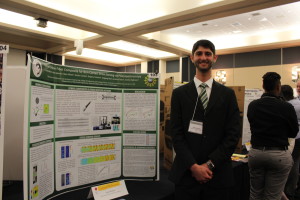
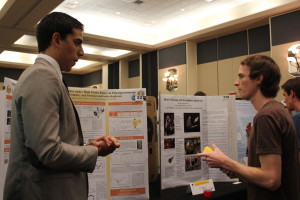
Hunter’s poster (left) described novel thermal mechanical testing instrumentation while Drew (right) presented Inelastic behavior observed in thermal gradient mechanical load studies of thermal barrier coatings.
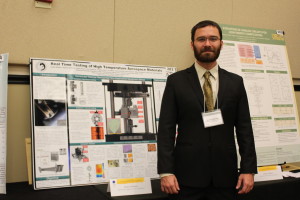
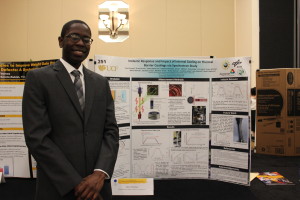
We were joined by the Limbitless team with their excellent posters on various aspects of the 3D printed design of their bionic arm.
Our research highlighted on Argonne website
ACerS Cover Story: Our High Temperature Materials Research
Gregory Freihofer, recently graduated with a PhD in Mechanical engineering wins 2nd place award at SAMPE CAMX student competition
Gregory Freihofer wins 2nd place at the SAMPE CAMX student paper competition
Stephen and Greg Spend Summer at Boeing Seattle as part of NSF GOALI Research
Stephen and Greg Spend Summer at Boeing Seattle as part of NSF GOALI Research
Boeing Research
Ashley and Greg performed summer research at Boeing Seattle
Synchrotron X-ray measurement techniques for cylindrical samples under thermal gradients
This study displays the ability to monitor in situ, the response of the internal layers within a layered coating, while implementing a thermal gradient across the thickness of the coated sample. The thermal setup maintained coating surface temperatures in the range of operating conditions, while monitoring the substrate cooling, for a controlled thermal gradient. Read our paper here.
Abstract
Measurement techniques to obtain accurate in situ synchrotron strain measurements of thermal barrier coating systems (TBCs) applied to hollow cylindrical specimens are presented in this work. The Electron Beam Physical Vapor Deposition coated specimens with internal cooling were designed to achieve realistic temperature gradients over the TBC coated material such as that occurring in the turbine blades of aeroengines. Effects of the circular cross section on the x-ray diffraction (XRD) measurements in the various layers, including the thermally grown oxide, are investigated using high-energy synchrotron x-rays. Multiple approaches for beam penetration including collection, tangential, and normal to the layers, along with variations in collection parameters are compared for their ability to attain high-resolution XRD data from the internal layers. This study displays the ability to monitor in situ, the response of the internal layers within the TBC, while implementing a thermal gradient across the thickness of the coated sample. The thermal setup maintained coating surface temperatures in the range of operating conditions, while monitoring the substrate cooling, for a controlled thermal gradient. Through variation inmeasurement location and beam parameters, sufficient intensities are obtained from the internal layers which can be used for depth resolved strain measurements. Results are used to establish the various techniques for obtaining XRD measurements through multi-layered coating systems and their outcomes will pave the way towards goals in achieving realistic in situ testing of these coatings.
Role of Mechanical Loads in inducing in-cycle tensile stress in thermally grown oxide
Abstract
Experimental in situ synchrotron x-ray diffraction results tracking the strain behavior of the various layers during a cycle, under thermo-mechanical conditions are presented in this work. The quantitative strain measurements here show that the thermally grown oxide briefly experiences in-plane tensile stress with increased mechanical loading during ramp-up in the thermal cycle. These findings are the first in situ experimental observations of these strains under thermo-mechanical conditions, envisaged to serve as a catalyst for crack initiation. The depth resolved measurements of strain taken during applied thermal and mechanical load in this work are a significant step towards achieving realistic testing conditions.
Read our paper in Applied Physics Letters
Characterization of particle dispersion and volume fraction in alumina-filled epoxy nano composites using photo-stimulated luminescence spectroscopy
Abstract
A novel method is presented to validate the dispersion of a-alumina nanoparticles within a polymer matrix, as well as to create a calibration for filler particle volume fraction identification. Using photo-stimulated luminescence spectroscopy (PSLS), spectral information from a-alumina-filled epoxy nanocomposites consisting of varying volume fraction quantities of alumina nanoparticles was collected and analyzed. Surface contour maps of each nanocomposite were created by comparing integrated intensity data from the R1 curve of a-alumina throughout each specimen. These maps show satisfactory dispersion of alumina in the 5 and 25% volume fraction composites, whereas agglomerations were detected in various regions of the 38% nanocomposite, establishing the capability of this method to characterize photo-luminescent particle dispersion. This new approach also provides high spatial resolution, which can be used to determine the exact locations of voids, inclusions and/or agglomerations, while also predicting the volume percentage of photo-luminescent particle content within a specimen, lending itself as a quality control method in the manufacturing of these composites.
Read the full paper at http://www.nature.com/pj/journal/v43/n11/full/pj201182a.html
Stress-sensing nanomaterial
Read our paper in Nanoletters
Abstract
Calibration of high spatial resolution stress-sensing alumina-epoxy nanomaterials is presented. The piezospectroscopic property of luminescent chromium-doped alumina nanoparticles embedded as “nano-sensors” in epoxy-based materials is the basis for the stress sensing capabilities. The stress-optical properties are determined as piezopectroscopic coefficients in compression experiments for nanomaterials containing varying volume fractions of alumina nanoparticles. An increasing stress-sensitivity was demonstrated with higher volume fractions. Thermal variations were shown to have negligible effects on the stress sensing property. The development of this material sensing system will enable quantitative measurement and non-invasive monitoring of stress distributions within a polymer system applied as adhesives or as coatings on a substrate under loading conditions.

